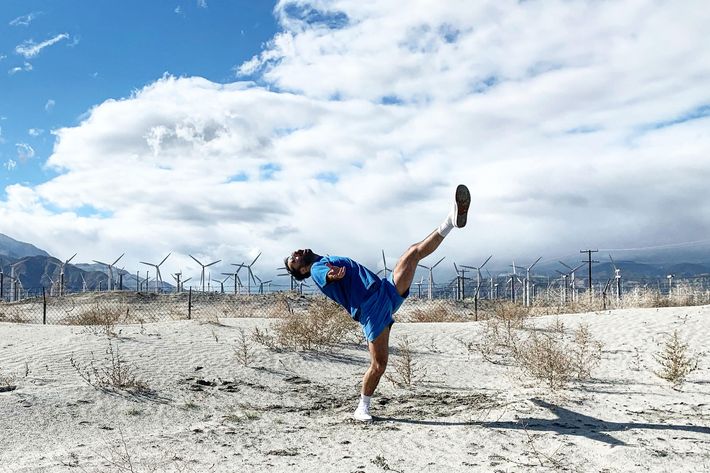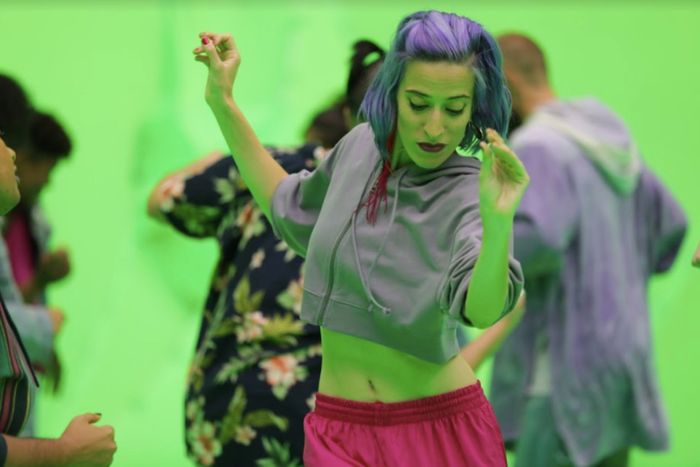
According to dance movies, every dance performance must end in one of three ways: sex, madness, or death. I can feel you protesting already, but please wait. Dirty Dancing: Jennifer Grey and Patrick Swayze dance, then have sex. Step Up: Jenna Dewan and Channing Tatum dance, then have sex. Black Swan: Natalie Portman dances until she goes mad, has sex with Mila Kunis, hallucinates about stabbing Mila Kunis, and then dies. Center Stage: Everyone has sex with each other and goes temporarily insane, and it can be argued that the final scene — in which Jody Sawyer performs an erotically charged ballet routine to Jamiroquai’s “Canned Heat” against a blood-red backdrop, then continues pirouetting wildly even after the curtains have closed — is a metaphorical depiction of the unstoppable human death drive.
This past year in particular has seen an onslaught of movies about people who dance, have sex, go insane, then die and/or become proud agents of death. First up was 2018’s Red Sparrow, in which Jennifer Lawrence’s Russian ballerina survives a violent attempt at career sabotage, then goes on a government-funded murder rampage across Europe. Suspiria (the 2018 remake of the urtext of fucked-up dance movies) stars Dakota Johnson as an infernal witch queen on the down low who absolutely crushes her group dance performance, then mercy-kills several of her peers before tearing open her own chest. Gaspar Noé’s Climax, which goes wide this week, is yet another chaotic orgy of dance-related horrors. After someone spikes a Parisian dance group’s punch with LSD, the performers begin to absolutely freaking lose it in every sense: peeing on the floor, locking children in electrical closets, having sex with siblings, lighting each other on fire, and bashing each other’s heads into concrete floors.
Watching Climax, I began to wonder: Why are there so many movies like this? What is it about dancers that inspires filmmakers to depict them in various forms of total destruction? And, most importantly, how closely do these films hew to real life? In other words, are all dancers really just horny, deranged murderers? I reached out to two — Jesse Kovarsky, dancer and associate choreographer for The Band’s Visit, and Ani Taj, director, choreographer, dancer, and founder of the Dance Cartel — to find answers to my burning questions.
Do accusations of witchcraft run rampant in the dance community?
In Suspiria, Dakota Johnson becomes convinced that a coven of witches runs her dance school. She is correct. I asked Taj and Kovarsky if they and their dance troupes had ever begun to slowly turn on each other, perhaps via accusations of witchcraft. “No,” said Taj. “People get fits of giggles that can’t be stopped in rehearsal. It’s never tipped into wild accusations or screaming matches. No witchcraft … yet.”
Kovarsky was more open-minded about the possibility that his peers were supernatural masterminds. “There is some weird spiritualism that goes on among New York dancers. A lot of them are vegan hippies,” he said. “A limited diet can lead to trying to find other spiritual outlets, which can lead to the assumption of witchcraft. I’ve never actually seen somebody engage in witchcraft, but I could see how your diet could lead to it.”

Is dancing always loaded with dystopian sexual overtones that emerge when you’re spending that much time together?
It’s essentially impossible to produce a dance film that does not include bizarre sexual dynamics. But Kovarsky and Taj disagreed on whether this is a realistic portrayal of the dance community. “I’m grateful to say it’s never tipped into a weird sexual dynamic with my company or any group of dancers I’ve worked with. It feels like a deep trespass of the bond,” said Taj. “I can’t say for sure if all the movies you’re talking about are made by men, but the particular gaze on it feels like it’s part of a male perspective.” (She was right: All of the movies listed above were directed by men.)
Kovarsky put it thusly: “If you’re on the club scene, you go to any gay bar, any fucking circuit party, it’s all about raging sex. These guys are around each other 24/7, on all the drugs, all the steroids. In my eyes, it’s a complete dystopia. [Dancers] are manipulated by their own egos and physical displays of perfection.”
Is dancing on drugs a thing?
“Does a beer count?” Taj asked.
“Yeah, of course. Duh,” Kovarsky said. “At Pride three years ago, I was dancing and some guy spiked my drink, and it turned into that experience of Climax. I was running around the club puking, shivering, trying to find somebody to help.” He paused for a moment. “Also, sometimes I perform and smoke weed, and that’s like playing a video game.”
Is dancing a slow descent into madness?
Asked if they had ever felt like they were going insane while dancing, both laughed somewhat insanely. “Sometimes when you’re really on a kick, and have been going for a while, there is a feeling of being transported. Adrenaline and accelerated heart rates do something to your body. Does it make me feel insane? Only in a good way,” said Taj.
“Not without drugs,” said Kovarsky. “But I’ve seen others go insane. They let themselves go past a psychological threshold. If you have any remote history of mental illness, you’ll tap into that when you dance in certain contexts.”
Can one dance oneself to death?
Both Taj and Kovarsky admitted they had danced past their own physical limits. “I choreograph some fairly high-adrenaline stuff, and some of the paces really ask you to not stop,” said Taj. “It’s high energy through three minutes. There’s one moment where this other dancer and I are kicking our heads for a couple minutes straight, and by the end of that sequence I usually feel like I’m gonna vomit or pass out.”
“Maybe after a dance,” added Kovarsky. “If I’ve exerted a lot of fucking energy and I’m breathing really hard, there’s a lot of excavating I want to do. I need to go to the bathroom and down a hot dog. There are things where I’m like, Damn, I might die right now from exhaustion.”
Has it ever made you want to commit murder?
I asked Taj and Kovarsky if either had ever felt like violently killing their peers. Both considered the question thoughtfully. “Never! I’m being totally honest. The people I share physical space and collaboration creatively with are the people I would lay down for,” said Taj. “That being said, of course there are tensions that arise in any creative process. But for me, that intense physical connection and fluid communication doesn’t tip into violence.”
Kovarsky did not feel his fellow dancers deserved the time and energy it would take for him to murder them. “I don’t care enough about some of my other dancers to want to kill them,” he laughed. “They don’t deserve death from me. And if I even tried to kill them, it would end up being about them and not me. They would steal the attention.”
Do dance movies get anything right?
Kovarsky said he found Suspiria to be the most accurate dance film he’d ever seen. “I love how ritualistic it was, all these women paying tribute by engaging in this physical movement, leading to a break in normality. A passageway to a demonic presence,” he said. “So cool.”
Taj was a fan of Climax’s first quarter — “Immediately after I got out of the movie, I texted three people who were important to me and was like, ‘You have to go to this movie. If you only stay for the first 25 minutes, that’s probably fine’” — but disturbed by the implications that dancers trapped in a warehouse on drugs were likely to go apeshit on each other. “Why is dance always the conduit for this intense darkness, when in fact, as a dance-maker, I experience it as such a celebratory and cathartic form?” she asked. “I guess that’s a form of catharsis, but it’s not for everyone.”
As for which movies utterly failed? Taj disliked Black Swan: “As a queer-identified human, the gratuitous lesbianism that’s also mother-hating was tough for me. It feels like the wrong use of woman-on-woman love, which is very common.” Kovarsky thought for a moment before telling me the dance movie he found to be the most egregious: “High School Musical. Basketball dancing should not be a thing.”



